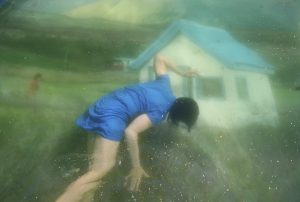Women in the Provinces
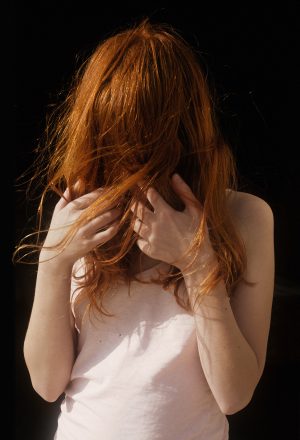
Helle Helle (b. 1965) was awarded a lifetime grant from the Danish Arts Foundation in 2010. The nomination letter stated, that she is “one of Denmark’s foremost interpreters of the middle classes and of the Danish provinces”. She has generally been read and interpreted thus: As an author who sheds light on the outskirts, on the lost souls in the furthest provinces of the Danish welfare-system, and on the typical tensions in relationships of our times. Gyldendal’s Online Encyclopedia describes her as a writer who captures slices of modern life as it is lived by ordinary people and, with a literary reference to Herman Bang, as a writer who observes the hidden conflicts of the humdrum of daily life.
In her novels and short stories, Helle has indeed demonstrated a keen eye for provincial communi-ties and its quiet existences of the 1990s and onwards. Prior to her latest novel, Hvis det er (2014; If You Want), her stories have generally been narrated from women’s perspectives. Women who either are or who desire to become invisible. Women who become enmeshed in webs of small falsehoods, concealments, and complications from which it is difficult to extricate oneself. Women who have difficulties opening up to the world: Whether it be in the intimate relationships with husband, friends, and siblings, or with more formal and distant associations. Women who have had a go at further education and career plans, but have given up on it all, either along the way or once quali-fied. Women who are in relationships which have suffered serious blows or are in a real mess. Women who have ended up in existential voids on the periphery of contemporary Denmark, geo-graphically and socially.
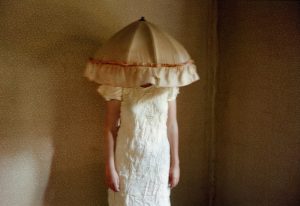
Is it really the case, as suggested by reviews of her work, that it may be considered as a sign of our times? In the details, perhaps, but in the overall picture, no. The surrounding reality – politically and historically – is well-nigh absent in her texts. Helle’s narrators do not excel at lengthy descriptions of the goings-on in the modern world, and the reader must pay attention to the details in order to date the framework of the events unfolding. In Forestillingen om et ukompliceret liv med en mand (2002; The Idea of an Uncomplicated Life with a Man), the construction of a bridge is mentioned – perhaps this is the Great Belt building project linking the Danish islands of Zealand and Funen. In If You Want a mobile telephone plays a role. Objects are observed and noted, but not systematically, and there is an absence of detailed depictions. The discourse is characterised by swift impressions rather than analytic scrutiny. The narrator in the short story Fasaner (1996; Pheasants) notes a rain-soaked newspaper on a step, a green bell pepper is noted in Globryllup (2000; Watching the Wedding). Because so few objects are mentioned, as a reader one swiftly searches for the symbolism and patterns of meaning in and around these objects – although no obvious clues are offered.
The narrators are nonetheless brilliant observers of the typical manners and customs of provincial life, in the private, domestic sphere as well as in the public arena. They register the simultaneously intimate and detached relationships occurring within a group of people which is small enough for everyone to know everyone and to have known one another for a long time. They capture the typical everyday routines of domestic life as well as the world of work. From Putte and John, both on disability benefits, who cook and tend to their dogs in Ned til hundene (2008; Down to the Dogs), to hospital cleaning in The Idea of an Uncomplicated Life with a Man, or working in the perfume shop on the Rødby-Puttgarden ferry in Rødby-Puttgarden (2005; Rødby-Puttgarden). Helle thus adheres to the greatest virtue required of the author of realism: to depict reality – as it is – viewed from a specific vantage point. Again, it should be noted how these concrete routines and rela-tionships are not the main subject of her writings.
Understated Realism
A restrained, underplayed realism which can but cautiously be described as interpretative is at the core of Helle’s particular talent. Non-interpretative interpretations of sorts, derived from the ‘weak’ first-person narrative perspectives, make for a dynamic interaction with the reader – who is, by and large, entrusted with the task of interpretation.
This form or style has been dubbed ‘minimalist’, a style which internationally spans from Ernest Hemingway’s unostentatious prose and the ‘dirty realism’ that followed in its wake through the work of writers such as Raymond Carver, Charles Bukowski, Mary Robison, Jayne Ann Philips and John Ford. In Danish literature, it is akin to the neorealism practiced by Anders Bodelsen in the 1960s (particularly his short stories), and to the social realism of the 1970s, e.g. the work of Vita Andersen. While the former was interested in the lifestyles of modern suburban neighbourhoods, and the latter turned a critical gaze on gender roles and social inequality, the works of dirty realism have were always more existentialist and far less pro-actively interpretive.
In the Nordic region, this genre experienced a robust renaissance from the late 1990s through the 2000s, e.g. the works of many Norwegian writers. Frequently male writers (Jonny Halberg, Kyrre Andreassen, Frode Grytten, Levi Henriksen, Ari Behn, et al.) who, using the same taut style, often wrote about men in crisis, men living on the margins of Norwegian society, in the villages, the provinces, the dregs. Norway adopted the genre label and ‘dirty realism’ was translated as ‘skitten realisme’. In Denmark, alongside Helle, writers such as Simon Fruelund (who has also translated Carver into Danish) and Jakob Ejersbo work within the same form in their collections of short sto-ries. The Nordic version of the genre has primarily, but not exclusively, been shaped by male writers. Norwegian Tonje Røed’s first book, the short story collection Ferie (1999; Holiday), is an example of genre-specific ‘skitten realisme’, while Danish Naja Maria Aidt’s short stories show a clear affiliation to the style. Finnish Sofi Oksanen and Swedish Susanne Alakoski may also be considered genre relatives.
Helle Helle has written two strong collections of short stories – Rester (1996; Remains) and Biler og dyr (2000; Cars and Animals) – which are taught in Danish secondary schools. Since publication of the latter, however, she has concentrated her efforts on the novelistic genre. She continues to work in the toned-down narrative style – short sentences and an observational tone. While the narrative perspective in Hus og hjem (1999; House and Home) and Down to the Dogs is that of educated middle-class women, the focus is often on those on the margins: Drop-outs from the education sys-tem, people on disability benefits, cleaners, and unskilled shop assistants are portrayed in a manner which leaves the reader endlessly annoyed by their laziness and lack of backbone while, at the same time, one cannot help caring about them. Helle’s subtle humour plays a key role: With a touch of irony and sarcasm this is a humour, which is simultaneously stimulating the readers’ cares and af-fection and the desire to shake the characters into action and taking a stand in life.
From Really Absurd to Absurdly Real
Helle published her first book in 1993, the pointillist novel Eksempel på liv (1993; Example of Life). The book has a somewhat absurdist style: In the opening of the book, the main character, Marianne, wakes up one morning with violent stomach pains. She proceeds to regurgitate the alphabet, letter by letter, out of order, and “at least four times”. Marianne remains passive, almost resigned to this occurrence, and feeling a “strange pride in her achievement”, she eats an apple, “mostly just to get her system going”.
In the following chapter, or rather, the next point, we meet Gyritte, a mature woman in the midst of burying her driving licence in the garden. After having insisted on being called “Watercress” ever since she was a little girl, she is now tired and bitter, almost angry at the prospect of being the last one to escape life. “It has been a bad night. / There will be more to come”, we hear with distinct Helle-esque sarcasm.
While Marianne displays an almost perfunctory acceptance of her peculiar situation, Gyritte is frus-trated and dissatisfied. The juxtaposition of resigned powerlessness and pent-up discontent about circumstances characterise Helle’s portraits of women in general, and one might say that that the difference between Example of Life and Helle’s other books is that, while resignation is played out as the absurd in the former, in her other works, the absurd is played out in, and by means of, reality.
In The Idea of an Uncomplicated Life with a Man, Susanne, a cleaner, sees herself being slowly pushed out by her boyfriend, Kim, and her colleague and friend, Ester. Susanne’s ideas about an uncomplicated life with a man turn out to be: Either a life with a man who is not Kim, a life with work and children, where it is not “a crime to daydream about family parties or new lighting above the dining table”, or as a life in which she is writing Kim’s obituary. To make a long story short: ‘De-complication’ requires Kim to disappear from of her world. Yet, she still does not break it off with Kim and move out.
In Down to the Dogs, Bente is looking for “a good place to cry”, after having been pushed out of her relationship with Bjørnvig as well as her affair with a school psychologist. Bjørnvig’s two assis-tants, Anja and Gitte, are doing so much better. So, Bente takes refuge with “two kind strangers” who do not ask questions but accept her passive state. In Rødby-Puttgarden, the narrator, Jane, begins the narration with the phrase: “In one week, four died, that’s how it was down here.” In Dette burde skrives i nutid (2011; This Should be Written in the Present Tense, 2014), Dorte kicks off by observing: “I wrote too much about that step. Where I locked myself out in March. Where I sat and stared in April. Where my mum and dad stood in down jackets well into May, heads at an angle.” Standstill, passive registration.
Unremarkable Women
This is what they are like, many of Helle’s women, as anonymous as their names: Anne, Dorthe, Susanne, Jane. We do not even know the real names of Bente and Vejmand in Down to the Dogs and If You Want.
Some of these women are weak-willed idlers who cannot decide what to do with their lives. This is true of Anne, who has returned to live in her hometown in Hus og hjem (House and Home). A part of her wants to go back and try to fit in again, creating a provincial setting for life with her husband and old friends. Another part of her is not convinced this is enough, and she is unable to muster the energy to unpack and turn the house into a home. She is virtually held hostage under a blanket on the sofa and finds herself having a make-believe flirtation with the local pastor. At the end of the book, when she visits the cemetary with her friend, Anita, and she asks her somewhat surprised why she looks so happy, Anne’s first reply is that it must be because she is coming down with some ill-ness before confirming that: “I am actually really happy, I am.” These are the last words of the novel. While Anita appears convinced, the reader remains unsure whether to believe the first or the second answer: Though Anne is perhaps a little more ‘at home’ now than at the beginning of the novel, fully assimilated she is not.
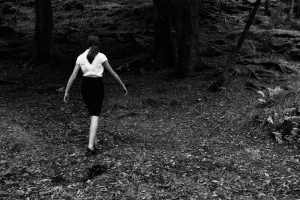
Rødby-Puttgarden comes to a similar conclusion with even less promising prospects however. Jane has moved in with her sister, Tine, in Rødby after having dropped out of college. She has tried to break a pattern, inherited from their mother, of going from one man to the next and lacking a sense of permanence, but her attempted breakaway has failed. Although in principle, Jane, Tine, and their mother should adhere to a family hierarchy of younger sister, elder sister, and mother, they are con-tinuously trading places: Jane and Tine are almost equally ‘mother’ to Tine’s daughter and to their own mother, an insight which strikes Jane at the end of the novel. After a brief and stormy relation-ship with a married electrician, she spends the last few pages sitting in the family rocking chair, wearing her sister’s pink boots, and the book ends:
“I rocked and rocked. The more I rocked, the more I was no longer me.
It was I, who was Tine.
It was I, who was our mother.
It is indeed true. There wasn’t anyone else.”
This is also the case for Dorte in This Should be Written in the Present Tense. Dorte is incapable of getting her act together and getting to her university course – a behavioural pattern she shares with her aunt, whom she is also named after. In this novel, the generational roles are also suspended in favour of a sister/friend bond, both women slipping in and out of relationships and having no ambi-tions to speak of.
The narrator, Dorte, lets herself be ruled external forces. At the beginning of the novel, she goes to the nearby train station to buy a new season ticket but ends up unintentionally boarding a train. She is, for no particular reason, waiting on the platform: When the train conductor sees her and mistak-enly ushers her onto the train, she boards the train leaving her to subsequently jump off again as the train picks up speed. Later, she unintentionally invites a young couple home – due to a misread hand gesture. They end up staying for the night, while she (against her will) ends up going with them to Copenhagen and to the university – because she finds herself caught up in the situation, by their cordiality, and by her inability to say no.
Towards the end of This Should be Written in the Present Tense, there are signs that Dorte is moving on. She may well share the same name as her aunt, she may well be quite similar to her aunt in terms of behaviour and mentality, but she has a potential, which her aunt apparently does not possess. Narrator-Dorte has given up on her formal studies and, helped by her friend Hase, she is slowly finding herself as a writer. It is as if she is only able to realise her full potential by withdrawing from her existing framework, assuming the self-imposed writer’s position as a mental and cultural exile. Regarding herself and the world around her in an externalised, matter-of-fact manner.
When, towards the end of the novel, aunt-Dorte suggests to narrator-Dorte, that they go on a shop-ping trip to the hypermarket on the outskirts of town, the reader senses how this reality is no longer of quite the same importance to narrator-Dorte as it used to be. She may be lacking in the ironic-judgemental anthropological tone of Bente in Ned til hundene (Down to the Dogs), who – as a re-sponse to Bjørnvig’s two assistants’ preoccupation with their upcoming thirtieth birthdays, an event typically celebrated by the public shaming of bachelors and spinsters (words which in Danish are added the prefix, ‘pepper’) by placing oversized peppermills outside their homes – scathingly re-marks, that they are “part of a culture that includes oil drums disguised as peppermills”. A similar observational distance is, nevertheless, taking root within Dorte.
The Other Woman
The parallel structure Dorte/Dorte is not unique in Helle’s writing. Variations of this configuration feature in most of her novels. In House and Home, the parallel structure is between Anne and her friend Anita, in Rødby-Puttgarden it is between Jane and Tine (and, in part, their mother), in Down to the Dogs, there is a trilateral structure between Bente and the assistants, Anja and Gitte, on one side and Putte on the other, and in The Idea of an Uncomplicated Life with a Man, the parallel structure is between Susanne and Ester. The hierarchy between the women varies, however, from novel to novel.
The pairing most similar to the Dorte/Dorte version is that of Jane and Tine. Jane also has greater potential than Tine, though the ending, as previously mentioned, does not offer the same prospects of fulfilment. House and Home also points in the same direction. Anne left the provincial town in order to pursue her studies, whereas her friend Anita has stayed behind. Here, however, the devel-opment concerns itself less with detaching oneself from the social/psychological setting than with finding one’s way back.
In Down to the Dogs, Bente is played off against two fronts. On the one side, the assistants Anja and Gitte, whom Bente obviously feels superior to because of their provincial shallowness – but they surprise her by slowly closing in on her domain. At one point, Gitte offers her a story, which she is welcome to use in her writing, seeing that she “was the only professional author they knew”. It is implied, that Bente would not dream of taking up their offer, and she describes the situation with arrogant contempt. Shortly afterwords, one learns, however, that Gitte has co-authored a book with Bjørnvig, and Anja is going to marry the local school psychologist with whom Bente has had a fling.
The irony of fate thus looms large when Bente ends up with John and Putte and starts a relationship with Putte’s brother, Ibber – people for whom the notion of writing a book is quite unthinkable. While Bente and Bjørnvig are clearly part of the cultured middle classes, and Anja and Gitte are working-class small-town women, John and Putte have hit rock bottom. They have no capacity for work, they live a life with no objective beyond tomorrow’s meals of curried meatballs or chilli con carne. Ibber is quite the same, though he is, perhaps, slightly more awkward and shy, but the three of them possess an unwavering generosity of spirit, offering Bente the space in which to cry that she was searching for in the very first sentence of the novel.
While it may be reading too much into things to claim that Bente ‘finds herself’ with John and Putte, less apparently suffices: She has found a social context which does not pose questions, makes neither demands or nor places expectations on her. When at the end, she hesitates in responding to Putte’s question of whether she actually wants to be found, this is equally due to her not wanting to return to her old self as it is a matter of not wanting to return home to Bjørnvig.
Contemporary Women … and Men?
When Bente is unsure of whether she wants to be found by Bjørnvig, it is not not because he has treated her badly. On the contrary, Bente’s description of their relations makes it quite clear that he attempts – however ineptly – to reach out to her and help her through her crisis. But he fails, and her observations of his little idiosyncrasies and irritating habits bear witness to a relationship that has run its course.
Naturally, the reception of Helle’s novels and short stories has focused on her depictions of women. She usually narrates the stories from womens’ perspectives, and the protagonist is always female. Nonetheless, it is also relevant to turn to her male characters, particularly since her latest portrait of a woman was framed by a male narrator.
If You Want is narrated by Roar, a somewhat awkward and clumsy computer service engineer who gets lost while out running in the forest and encounters an equally lost female jogger, referred to as Vejmand because, she says, her name sounds a bit like that. They join forces, and over the course of two days of being lost in the forest, they come closer to each other. This apparently enables Roar to tell her story. A story about spending her uprooted youth living in a commune where the other in-habitants would – at times – put up with her, and – at other times – look after her. About her drifting in and out of relationships until she reconnects with Christian, an early boyfriend. About moving in with Christian and her role as beloved daughter-in-law and caring stepmother to Christian’s son, until the day Christian pulls the rug from under her and breaks off the relationship – because she masters the role too well and too much. One notes that while her name is not really ‘Vejmand’, the name is an intertextual reference: Roar’s depiction of her resembles poet Jeppe Aakjær’s sentimental tribute to Jens Vejmand (1905; Jens, the Roadmender), the roadmender who “by hammer turns the hard stones into bread”, wearing himself out by mending the roads. Helle’s Vejmand is a hard worker too, toiling relentlessly. The name also evokes the strongest literary reference in Helle’s later oeuvre: Herman Bang. Helle shares Herman Bang’s focus on the ‘quiet existences’, while Jane’s sister, Tine, in Rødby-Puttgarden recalls Bang’s Tine (1889; Tina, 1984), Vejmand alludes to Bang’s Ved Vejen (1886; Katinka, 1990) – another depiction of love’s misfortunes and the sad fate of a ‘quiet existence’.
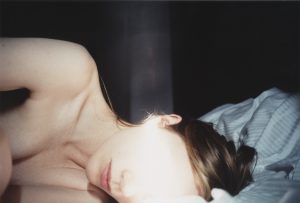
In terms of being insignificant and lacking in practical sense and the ability to grasp things, Roar hardly falls behind Anne, Bente, and Tine. Roar bought running shoes, but managed to get two dif-ferent sizes, and one of them gives him blisters. Vejmand takes the lead most of the time – e.g. she finds a shelter for the night, goes out searching for water, and treats Roar’s blister. Towards the end of the novel, however, the roles are reversed. As Vejmand suffers dehydration due to an upset stomach and comes closed to giving up, Roar comes into his own and takes the lead.
It is difficult to refrain from considering the portrayals of Roar, Christian, and Vejmand as a corrective to those of us, whose critique has (over)emphasised the fact that Helle writes about insignifi-cant, inert women from women’s perspectives.
In fact, the men appearing in the novels do not differ much from this characterisation. Dorte’s partner, Per Finland (This Should Be Written in the Present Tense) is going nowhere. He has difficulty getting up in the morning and lacks any purpose in life. His cousin, whom Dorte also lives with for a while, may hold more potential, but he too drifts on to another woman. Anne’s husband, Anders (House and Home) is a kind of mirror image of Anne (down to his name). He may not be quite as keen as Anne on integrating into provincial life, but he slowly adapts to the situation. While Anne’s attempted assimilation is achieved by flirting with the next-door pastor, Anders’s attempts lead him into a brawl at the local town festival – the ritual reverberations caused by these actions warranting no further explanation.
Being In-Between
Helle’s characters are not typical of their time, rather, it is almost as if they have fallen through time. They are the remains which sink towards the bottom, psychologically and existentially. They are caught in the gap between being and not-being, each and everyone handling this liminal state differently.
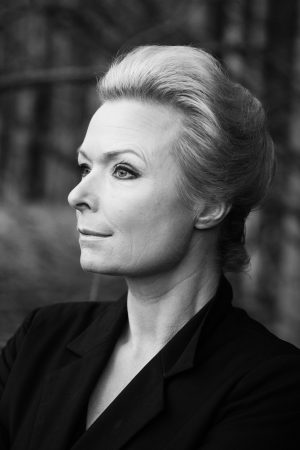
The writer, Bente refuses to be anything or anyone, she derives her being from this state of non-existence. Neither Dorte is anything from the outset but she discovers that she may a writer. Ve-jmand wants to be there for somebody – the stepson, Christian, the mother-in-law – but she is de-nied this on account of being too much. Anne wants to become part of the world she used to inhabit. Susanne merely desires an uncomplicated life with a man. And having no clue what she wants, Jane finally realises that this lack of purpose characterises her life as well as the lives of her sister and mother.
Rather than offering a depiction of contemporary women through the female characters, Helle is thus exploring the existential qualms common to all of humankind. There is a shared theme in the novels of seeking and averting identities, of searching for home and the discovery of being home-less, of being in relations and claiming one’s individuality. Helle is capable of maintaining the drama between the meaningful and the pointless, between the absence of meaning and presence in a daily life devoid of drama. Her prose is sparse, stretched out between insignificant characters and oddly uneventful events. At the core of her art, we thus find significance written in small print.
– – –
Published december 2014


